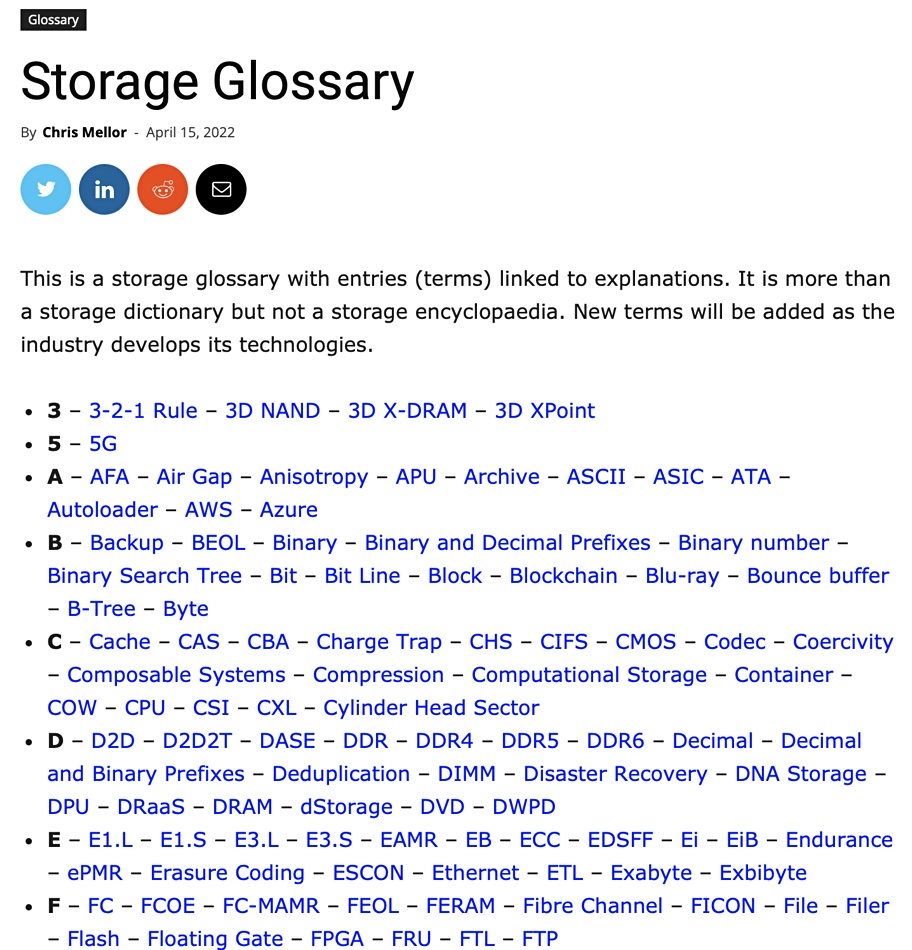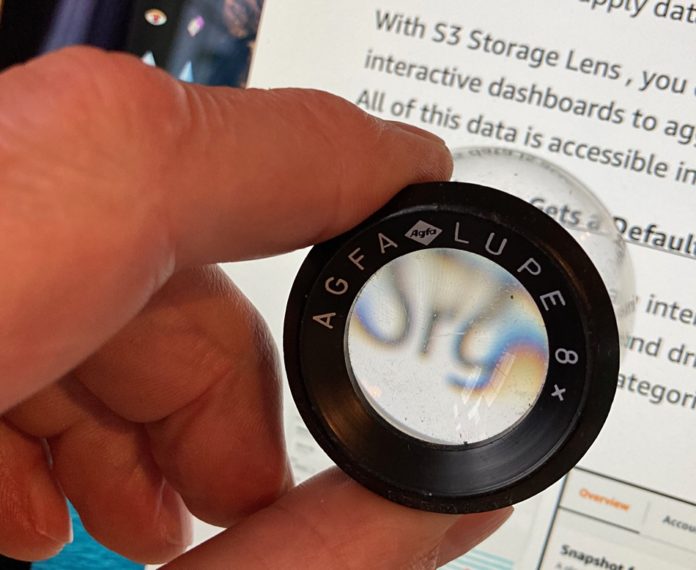There is quite a lot of tech terminology that’s specific to the storage industry, and if you’re like us, you might even have jogged your memory with prior articles in the Blocks & Files site to discover what the definition of terms like B-Tree, LSM-Tree or yobibyte mean when you come across them.
But that’s not the easiest way to get to the bottom of the problem in a hurry when all you want is a quick and concise description of what a tech term means. It’s not a new problem. Businesses like Gartner, HPE, IBM and Kioxia each have glossary mini-sites to fix the same problem – generally using an index page with links to individual entries which explain what a term means.
And who better to create a storage news glossary mini-site than Blocks & Files? We’re obsessed with the tech. So we’ve cooked up an index listing all the storage tech terms we could initially think of, just over 300 so far. Here’s a glimpse of what that looks like:

Each term listed is URL-linked to an explainer definition and, where we think it’s needed, a mini-article. There is a link to the glossary mini-site on the Blocks & Files homepage to provide a single point of entry:

We tried to balance the economy of a mere definition with a bit of an explanation where it seemed to be a good idea. The SR-IOV entry, for example, says SR-IOV stands for Single Root I/O Virtualization and then provides a short explanation of what this means as well.
Getting the balance right here is difficult. Our glossary is not an encyclopedia, nor does it try to emulate Wikipedia, nor be as comprehensive as HPE. It’s intended to be a reasonably quick mini-reference. Do contact us if you think something can be improved, is wrong or missing. There’s a contact webpage you can use or you can message me on Twitter at @Chris_Mellor or drop me a line on LinkedIn where I can be found as Chris Mellor.
So what is a yobibyte? It’s 1,024 zebibytes with a link to a Decimal and Binary Prefix entry to explain what that is. Exabytes, exbibytes and other binary and decimal prefixes are all covered there.


